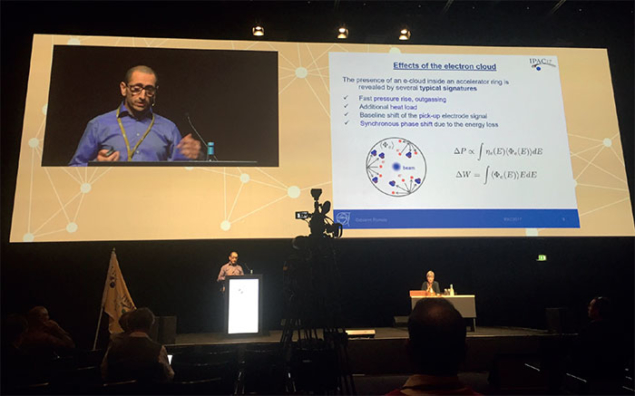
Image credit: N Iida/KEK.
The 8th International Particle Accelerator Conference (IPAC) took place in Copenhagen, Denmark, on 14–19 May and was attended by more than 1550 participants from 34 countries. Hosted by the European Spallation Source (ESS) and organised under the auspices of the European Physical Society (EPS) accelerator group and the International Union of Pure and Applied Physics, the event was also supported by the MAX-IV facility and Aarhus University.
Although accelerators were initially developed to understand the infinitesimal constituents of matter, they have evolved into sophisticated instruments for a wide range of fundamental and applied research. Today, particle accelerators serve society in numerous ways, ranging from medicine and energy to the arts and security. Advanced light sources are a case in point, following the steady improvement in their performance in terms of brilliance and temporal characteristics. MAX-IV and the ESS, which lie just across the Oresund bridge in Sweden, are two of the most powerful instruments available to life and material scientists, and are operating and under construction, respectively. Meanwhile, the most brilliant source of ultra-short flashes of X-rays – the European X-ray Free Electron Laser at DESY in Hamburg – has recently achieved first lasing and will soon be open to users (“Europe enters the extreme X-ray era”). Another X-ray free-electron laser, the SwissFEL at PSI, has just produced laser radiation for the first time in the soft X-ray regime and aims to achieve smaller wavelengths by the end of the year. New synchrotron light sources have also come into operation, such as the SOLARIS synchrotron in Poland, and major upgrades to the European Synchrotron Radiation Facility in France based on a new lattice concept are planned.
Particle physics remains one of the main drivers for new accelerator projects and for R&D in IPAC’s many fields. The big brother of all accelerators, CERN’s LHC, performed outstandingly well during 2016, exceeding nominal luminosity by almost 50% thanks to operations with more tightly spaced bunches and due to the higher brightness of the beams delivered by the LHC injectors. Mastering the effects of electron clouds and carrying out progressive “scrubbing” of the surfaces of the LHC beam screens have been key to this performance. Achieving nominal luminosity marks the completion of one of the most ambitious projects in science and bodes well for the High Luminosity LHC upgrade programme now under way. IPAC17 also heard the latest from experiments at CERN’s Antiproton Decelerator facility, including the trapping and subsequent spectroscopic measurements of antihydrogen atoms and the exciting studies that will still be carried out using the new ELENA facility there.







